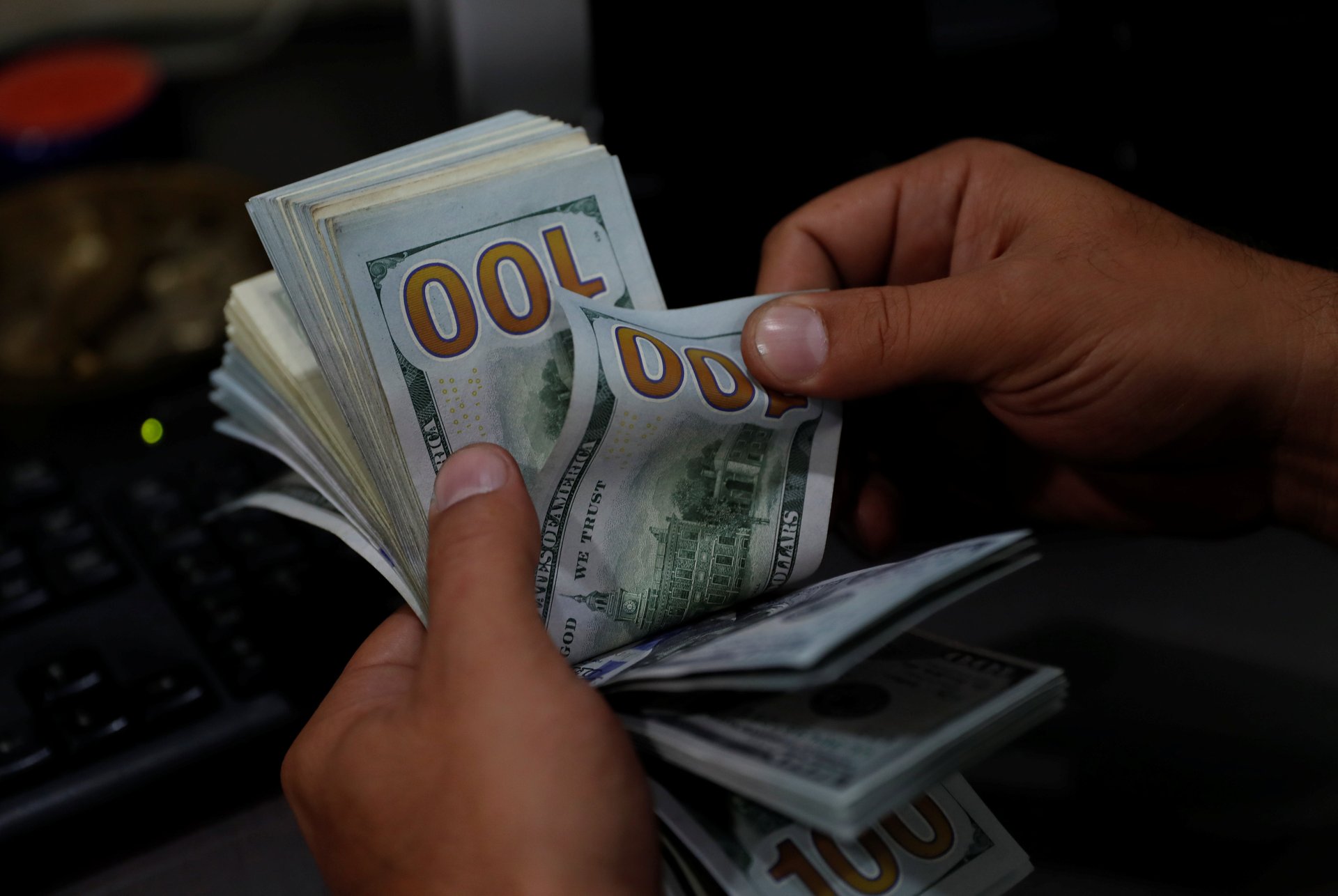Smart banknotes will be the cash of the future
This story is part of What Happens Next, our complete guide to understanding the future. Read more predictions about the Future of Money.


This story is part of What Happens Next, our complete guide to understanding the future. Read more predictions about the Future of Money.
Must we pit digital money in a battle against hard cash? Must we really swear our full loyalty to one or the other? What if a banknote could function as a sort of digital prepaid card, on which you could electronically load value using your mobile phone—except that unlike a card, it could also be accepted at the corner shop in the same way banknotes are passed around today?
In our minds, money assumes different physical states: a stash of money feels rock-solid, then it speeds up and becomes liquid, and, ultimately, heats up and vaporizes away. Such physical-state metaphors about our money are deeply entrenched in our language; they are how we think about money.
So it seems fitting that money can now sustain actual changes of state. It flows between atomic coins and notes as well as digital entries in computerized ledgers. Both the physical and digital have their advantages. Hard cash is fantastic: Everyone can accept it through mere visual and tactile inspection, and it has no memory. Digital cash is fantastic for different reasons: You can zip it anywhere instantly, and it leaves a trail. Which is “better” depends on the circumstances, such as the distance between the transacting parties and their preference for anonymity or traceability.
The problem is that these two types of money are hard to reconcile. Unlike metaphoric money that can change from a solid to a liquid to a gas, a banknote stubbornly holds its form. We can convert digital money into hard cash and back again by taking a trip to the ATM, but this takes time, effort, and accessibility.
And for that, we blame cash. Why? Digital money is the new upstart, after all—shouldn’t we blame it for not working well with the system that came before it? Why is it cash that should have to change? It seems facile to simply wish one away and imagine the world as a cashless nirvana. The new should replace the old only if it is better in every way—but for all its whizbang promises, digital money isn’t.
Instead, it seems more appropriate to make them work together. Here’s how.
Imagine that all banknotes have a chip in them. That’s inevitable, anyway: Banks will soon want to make it possible to determine whether a note is valid or not with absolute certainty. Imagine further that the banknote has some kind of short radio interface through which it can communicate with mobile devices. That’s not far-fetched, either: Many items in the supermarket already do, after all, in the form of RFID tags. Finally, imagine that the banknote’s appearance changes when the chip is turned off: Its inky color turns to grayscale. Soon these three technologies will all be printable directly on thin, flat surfaces.
With that setup, you’ll be able to transfer value from your banknote directly to your bank account. You want to deposit a $20 banknote into your account? No need to go to a bank branch or ATM: Just wave the banknote in front of your mobile phone and have the $20 transferred from the banknote to your bank account. Your bank balance increases by $20, the state of the banknote’s chip is changed to “no value,” and the note itself is visibly grayed out.
But that doesn’t mean you should throw the value-depleted banknote away: You might want to use it to withdraw money from your account later. Wave a gray banknote in front of your mobile phone, and transfer $20 back into it from your digital bank account. The state of the note’s chip changes to “valid,” and it recovers its full color. Now it can function as a normal banknote, and everyone will readily see it’s a valid because of its color.
With such a system of smart banknotes, everyone could take the matter of cashing in and out into their own hands. Your phone truly becomes a personal ATM.
This proposal brokers a peace agreement between digital and hard cash; it lets some people keep their money habits if they can’t or don’t want to change, and the rest of us who prefer our money in the cloud can operate totally digitally. Moreover, the specialized logistics, cost, and security risk of cash transport and storage disappears.
Gray (i.e. value-depleted) banknotes could be distributed through normal retail channels; buy a stash of gray notes at the supermarket for a nominal fee, and you can inject value into them from your own bank account at home. Any shop with a bank account could produce exact change by keeping a stash of gray banknotes in a drawer and giving them value as and when required. In this way, people’s preference for physical cash would not saddle the rest of us with costly and unsafe cash drawers and cash-movement logistics.
Killing cash would be a step backwards—but making it smarter could take us closer to that nirvana we’re looking for.
This story is part of What Happens Next, our complete guide to understanding the future. Read more predictions about the Future of Money.